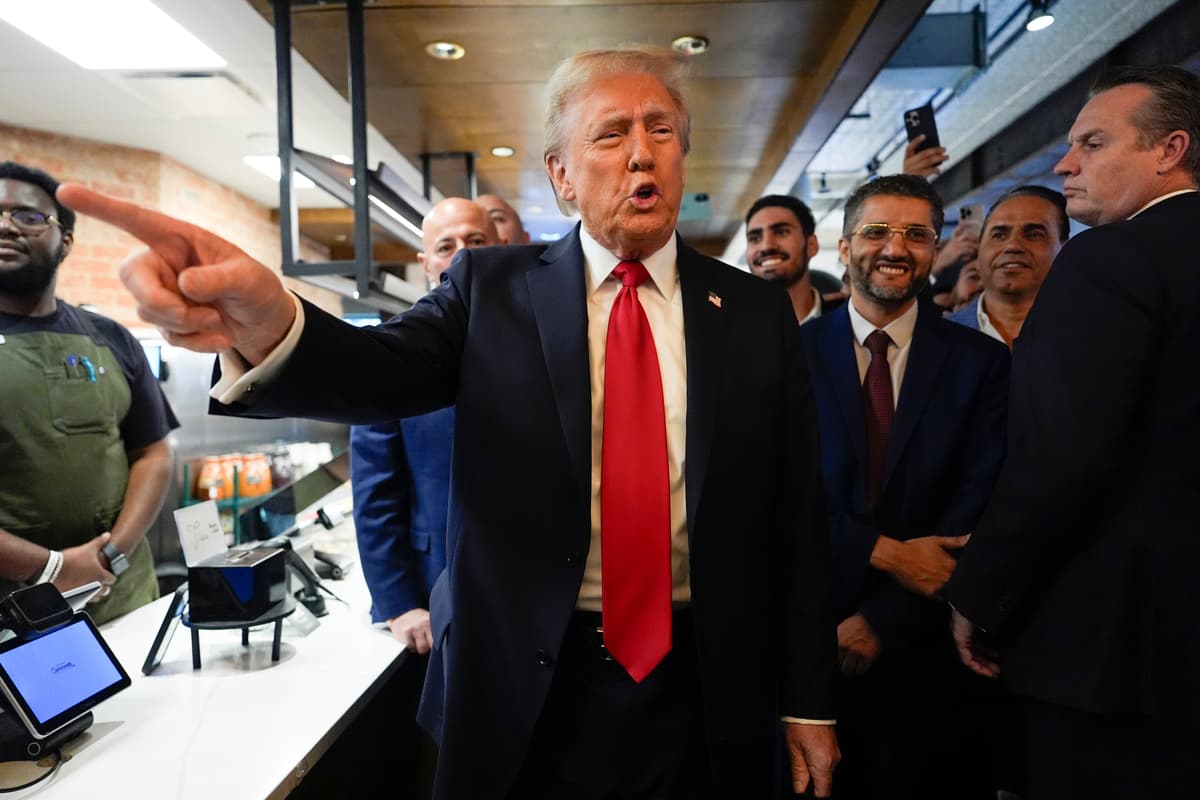Trump Plans for Recess Appointments Could Put Him at Odds With Conservatives on the Supreme Court
Trump and his Republican allies are talking about going around the Senate for his more contentious nominations.

Republicans will control the White House and both houses of Congress come January. But President-elect Trump’s intent to nominate loyalists to fill key Cabinet posts has set up a possible confrontation with the Senate, which has the constitutional responsibility for “advice and consent” on presidential nominees.
Trump and his Republican allies are talking about going around the Senate and using temporary recess appointments, which last no more than two years.
Invoking that authority could result in a fight that lands at the Supreme Court. Trump might also have to claim another, never-before-used power to force the Senate into a recess, if it won’t agree to one.
In its 234 years, the Supreme Court has decided only one case involving recess appointments. In 2014, the justices unanimously ruled that President Obama’s recess appointments to the National Labor Relations Board were illegal.
But they disagreed sharply over the reach of the decision. Five justices backed a limited ruling that held the Senate wasn’t actually in recess when Mr. Obama acted and, in any event, a break had to be at least 10 days before the president could act on his own.
Justice Antonin Scalia, writing for the other four justices, would have held that the only recess recognized by the Constitution occurs between the annual sessions of Congress, not breaks taken during a session. That would have ruled out the appointments Trump may be considering after the new Congress begins in January and he is sworn into office.
Just two justices, Elena Kagan and Sonia Sotomayor, remain from the five-justice bloc that took the view that preserved the president’s power to make recess appointments during a session of Congress. Three others — John Roberts, Clarence Thomas and Samuel Alito — joined the Scalia opinion that would have made it virtually impossible for any future president to make recess appointments.
The rest of the court has become more conservative since then, a result of Trump’s three high court appointments in his first term. Justices Neil Gorsuch, Brett Kavanaugh and Amy Coney Barrett have no record on this issue, which rarely arises in the courts. Nor does Justice Ketanji Brown Jackson, a 2022 appointee of President Biden.
There is tension between respect for precedent and original meaning
A more conservative Supreme Court might come out differently today, though it’s by no means certain. Once the court decides a case, the ruling is regarded as precedent that is not lightly discarded. So even some justices who initially dissent from a ruling will go along in later cases on a similar topic.
Scalia, an icon of the right, applied his originalist approach to the Constitution to conclude that there was little doubt what the framers were trying to do.
The whole point of the constitutional provision on recess appointments, adopted in 1787 in the era of horse and buggy, was that the Senate could not quickly be summoned to fill critical vacancies, he wrote.
Reading a summary of his opinion aloud in the courtroom on June 26, 2014, Scalia said the power to make recess appointments “is an anachronism.” The Senate always can be convened on short notice to consider a president’s nominations, he said.
“The only remaining practical use for the recess appointment power is the ignoble one of enabling presidents to circumvent the Senate’s role in the appointment process, which is precisely what happened here,” Scalia said.
Only someone who has been affected by an action taken by an official who was given a recess appointment would have the legal right, or standing, to sue. In the NLRB case, Mr. Obama made his recess appointments in January 2012.
The board then ruled against Noel Canning, a soft drink bottling company in Yakima, Washington, in a dispute over contract negotiations with a local Teamsters union. The company sued, claiming that the NLRB decision against it was not valid because the board members were not properly appointed and that the board did not have enough members to do business without the improperly appointed officials.
The Supreme Court’s ultimate decision came nearly 2 1/2 years later.
Among the most prominent people who were first given recess appointments and later confirmed by the Senate are Chief Justice Earl Warren, Justice William Brennan and Federal Reserve Chairman Alan Greenspan. Among those who left office after failing to win a Senate vote is John Bolton, who was given a recess appointment as U.N. ambassador under President George W. Bush.
A separate novel legal issue could arise if Trump were to invoke a constitutional provision that his allies suggested would allow him to force the Senate to adjourn, even if doesn’t want to, and enable him to make recess appointments.
Article II, Section 3 of the Constitution includes a clause about congressional adjournments that has never been invoked. Trump’s allies read it as giving the chief executive the power to step in when the House and Senate can’t agree on when to adjourn. The provision reads that “in case of disagreement between them, with respect to the time of adjournment, he may adjourn them to such time as he shall think proper.”
But some scholars, including conservative ones, argue that the House has no power to force the Senate to adjourn, and vice versa. Congressional adjournments are spelled out in Article I, which requires one chamber to consent when the other wants to take a break of more than three days. Under this view, the president could intervene only when one house objects to the other’s adjournment plan.
Associated Press
